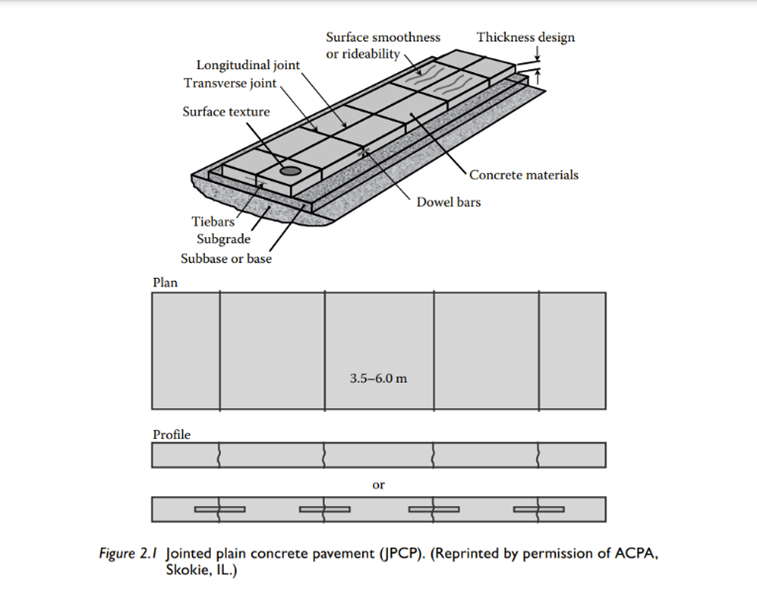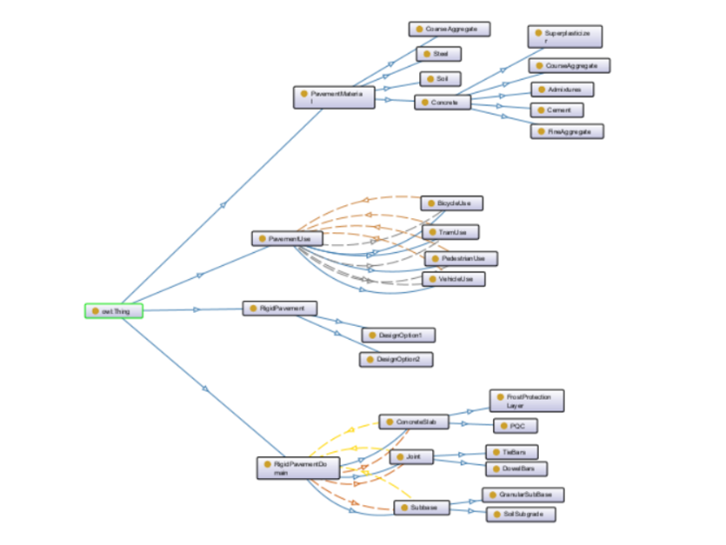What is the purpose?
The highway engineer can use this Ontology to methodically design a Jointed Plain Concrete Pavement. The highway engineer can once again look at the ontology to reflect on the method of construction that was chosen. With this information, he can strategically plan the repairs by referring to a structured and formal way to represent knowledge about a particular domain.
Components
The physical components of a rigid pavement include a Concrete Slab, Base Course, Subcase Course and Subgrade. A rigid pavement refers to the type of pavement which possesses significant flexural strength or flexural rigidity. The stresses in these pavements are transferred through slab action, as opposed to the grain-to-grain action in the flexible pavement. Rigid pavements are made of Portland cement concrete, with either plain, reinforced, or prestressed concrete.

Ontograf

Engineering Examples
A new highway is proposed, and the highway engineer must begin the design selection process
The highway engineer can use this Ontology to methodically design a JPCP. In most cases where data comes from diverse sources and formats, ontologies help in integrating and harmonizing the information. This ontology will provide a common vocabulary and framework for understanding and exchanging data across systems.
2. An existing highway has reached the end of its design life and needs to be resurfaced.
The highway engineer can once again look at the ontology to reflect on the method of construction that was chosen. With this information, he can strategically plan the repairs by referring to a structured and formal way to represent knowledge about a particular domain.
3. A highway engineer is looking for a formal ontology to expand upon.
To expand upon an existing ontology, it’s essential to carefully consider the specific requirements of highway engineering. This involves adding new concepts, refining relationships, and incorporating relevant standards and new materials in the civil engineering domain. Additionally, the highway engineer can collaborate with other experts in the domain can help ensure that the ontology is comprehensive and aligns with industry best practices.
References
1. Concrete Pavement Design, Construction, and Performance, — Norbert J. Delatte — 2, 2014
2. Ontology 101: A Guide to Creating your First Ontology, Noy & McGuinness